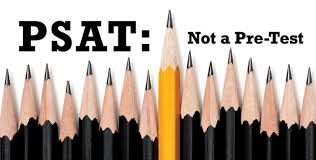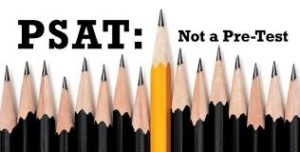
30 Nov Most Important Test in High Schooll

What is the most important test that your student will take during their high school career?
At the end of my workshops I pass out a survey and one of the questions I ask is “what are the top three things that you have learned today?” And it is mentioned at least 80% of the time that they had no idea how important the PSAT can be for their student’s college funding.
I would like to take a moment and share some important facts, ideas and strategies that you may not be aware of but could change your child’s future.
Let’s first talk about the two main myths of the PSAT and how they are negatively affecting your student’s future:
- “The PSAT is only a practice test for the SAT “therefore it is not that important for your junior year of high school. In fact, you shouldn’t worry about it and only take the SAT your junior year of high school.”
- “My students took it their sophomore year, so they don’t need to take it again.”
In an article written by Annie Schugart, in her article titled, “Why the PSAT is more important than the SAT (for scholarships) it says:
“The PSAT names the highest achieving students in the nation to qualify as National Merit Semifinalists (who can go on to become Finalists). This title and honor can, at many colleges, result in larger amounts of scholarship than any amount of scholarship received from the SAT itself.
“Unlike the SAT, in which students often constantly strive to bring up their scores by just a few more points, the PSAT requires that students merely reach the designated threshold to be named a Semifinalist. Thresholds are determined by state and are determined after the test occurs; however, by looking at previous state cutoffs, it’s fairly easy to predict what threshold a student will need to meet…
“For example, the University of Oklahoma, which is ranked number one for its number of National Merit Finalists enrolled, offers a near full-ride of scholarship to National Merit Finalists. This scholarship, valued at $101,000 for out-of-state students, is more than three times the amount of the next highest scholarship: a $31,200 scholarship for students who achieve a 34 ACT score (approximately a 2250 SAT).”
For clarification purposes, this article was written 3 ½ years ago when the SAT highest score was 2400 that has been changed to 1600. The only thing different today from when this article was written as the numbers have changed, that’s it.
This leads us to the two myths already mentioned in this article.
Let’s start with myth 2 first. The PSAT test held in October of your junior year is the one that the national merit scholars are chosen from. The one given during their freshman and sophomore years are not used in any way to determine a national merit scholar finalist. So yes, you should take the PSAT your junior year!
Myth 1, you have the potential of having much better scholarship opportunities from the colleges and many private sources – if you are a national merit scholar!
Let’s talk about few of the rules that you need to be conversant with.
- You can only take the PSAT one time a year.
- You currently have to be in high school.
- The tests are given in October at a local high school.
- You have to register for the test taken in your junior year, if you do not register you cannot take the test.
- In most instances, you will be able to sign up for the test during your first week of school.
Several of the questions that I am always asked after a workshop are:
- “What score does my student have to receive to become a national merit scholar?” This number varies state by state by state. In 2016, the national merit scholar number for the state of Texas was 220. It is being projected that the number for those juniors this coming year will be between 219 and 221.
- “What is the main difference between the SAT and the PSAT?” There are two main differences, the first being that is a shorter test. The second one is that the questions tend to be a little bit easier than the ones found on the SAT. The questions are in the same format as the SAT, however the test itself take into consideration that students are only beginning their junior year, not completing it or starting their senior year. Therefore, the questions themselves are made slightly easier to match the amount of knowledge that they are expected to have.
If your student is a junior this upcoming school year please have them begin preparing to take the PSAT in October! You should have them take some sort of a prep class. This will allow them to perform at his best.
If you happen to homeschool your students, you will need to approach one of the public schools in your area and see how you can sign your child up to take the PSAT.
If you would like further information on how the numbers are calculated, or what are the best type of prep classes for your student, please email at or call me and I will help you get the information.

No Comments